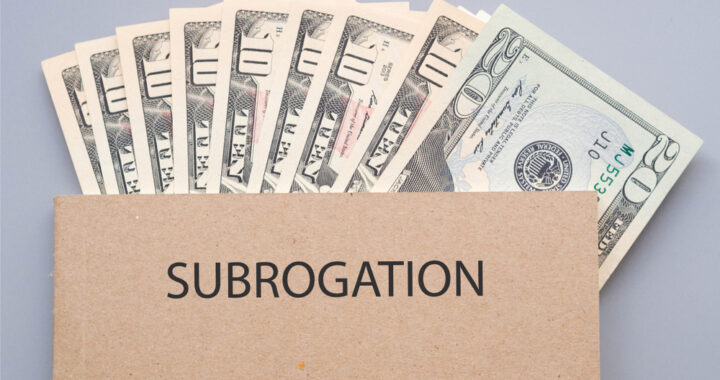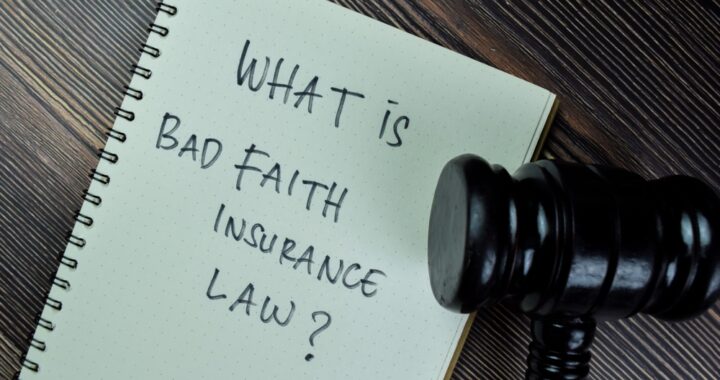The recent Eleventh Circuit Court of Appeals’ decision, American Builders Insurance Company v. Southern-Owners Insurance Company, 56 F.4th 938 (11th Cir. 2023), is an insurer versus insurer case that touches on two important insurance topics: (1) common law bad faith against an insurance company, and (2) an insurer’s affirmative defense that an insured settled a claim without its consent. The Eleventh Circuit provides invaluable legal discussion on these topics that any insured (and an insured’s counsel) need to know and appreciate. While this article won’t go into the granular facts as referenced in the opinion, it will go into the law because it is the law the facts of a case MUST cater to and address.
In this case, a person performing subcontracting work fell from a roof without fall protection and became paralyzed from the waist down. The general contractor had a primary liability policy and an excess policy. The general contractor’s primary liability insurer investigated the accident and assessed the claim. The subcontractor’s liability insurer, which was the primary insurance policy (the general contractor was an additional insured for work the subcontractor performed for the general contractor), did little to investigate and assess the claim and then refused to pay any amount to settle the underlying claim or honor its defense and indemnity obligation to the general contractor.
Both the general contractor’s primary insurer and excess insurer each tendered policy limits to settle the claim and avoid a bad faith claim by exposing the general contractor to more than policy limits, which was the determination had the matter proceeded to a trial.
The general contractor’s primary liability insurer then sued the subcontractor’s liability insurer for common law bad faith (based on equitable subrogation). The subcontractor’s liability insurer, among other things, argued it should be absolved because its policy was breached when payment was made to the claimant without its consent. The case proceeded to trial and a jury found in favor of the general contractor’s primary liability insurer. The subcontractor’s liability insurer appealed…and lost.
Common Law Bad Faith
[T]he critical inquiry in a bad faith [action] is whether the insurer diligently, and with the same haste and precision as if it were in the insured’s shoes, worked on the insured’s behalf to avoid an excess judgment. Additionally, any damages claimed by an insured in a bad faith case must be caused by the insurer’s bad faith. That is, the bad faith conduct must directly and in natural and continuous sequence produce[] or contribute[] substantially to producing such [damage], so that it can reasonably be said that, but for the bad faith conduct, the [damage] would not have occurred.
The bad faith inquiry is determined under the ‘totality of circumstances’ standard, and we focus not on the actions of the claimant but rather on the insurer in fulfilling its obligations to the insured. That said, a claimant’s actions –such as a decision not to offer a settlement-remain relevant in assessing bad faith. Insurers have obligations to advise the insured of settlement opportunities, to advise to the probable outcome of the litigation, to warn of the possibility of an excess judgment, and to advise the insured of any steps he might take to avoid [the] same,” as well as to investigate the facts, give fair consideration to a settlement offer that is not unreasonable under the facts, and settle, if possible, where a reasonably prudent person, faced with the prospect of paying the total recovery, would do so. These obligations … are not a mere checklist, however, and, as the Florida Supreme Court has explained, [a]n insurer is not absolved of liability simply because it advises its insured of settlement opportunities, the probable outcome of the litigation, and the possibility of an excess judgment.
Moreover, insurance companies occasionally have an affirmative duty to offer settlements. Bad faith may be inferred from a delay in settlement negotiations which is willful and without reasonable cause. Thus, [w]here liability is clear, and injuries so serious that a judgment in excess of the policy limits is likely, the insurer must initiate settlement negotiations. In such a case, where [t]he financial exposure to [the insured] [i]s a ticking time bomb and [s]uit c[an] be filed at any time, any delay in making an offer under the circumstances of this case even where there was no assurance that the claim could be settled could be viewed by a fact finder as evidence of bad faith.
American Builders Insurance Company, supra, at 944-45 (internal quotation and citation omitted).
Here, the jury reasonably found that the subcontractor’s liability insurer “acted in bad faith because it delayed acting on its duty to investigate and settle [the claimant’s] claim.” American Builders Insurance Company, supra at 945. The facts “could lead a reasonable jury to conclude that the [subcontractor’s liability insurer] delayed its investigation instead of attempting ‘to resolve the coverage dispute promptly’ or using ‘diligence and thoroughness.’” Id. at 946 (internal quotation and citation omitted).
Here, a reasonable jury could also find that the subcontractor’s liability insurer caused the general contractor’s liability insurer damages. The subcontractor’s liability insurer wanted to focus on the claimant and his attorney’s action. This was shot down. “Of course, there’s a difference between focusing on a claimant’s actions, which would be improper, and factoring a claimant’s actions into the totality of circumstances analysis, which is not improper. In this case, though, [the subcontractor’s liability insurer] flipped Florida law on its head and exclusively focused on [the claimant and his attorney’s] actions.” American Builders Insurance Company, supra, at 947 (internal quotation and citation omitted).
Insurer “Consent” Affirmative Defense
The subcontractor’s liability insurer argued that the general contractor’s primary liability insurer breached the subcontractor’s liability insurance contract “by failing to receive its consent before settling with [the claimant].” American Builders Insurance Company, supra, at 944. This was also shot down.
Subcontractor’s liability insurance contract provided:
[N]o insured will, except at the insured’s own cost, voluntarily make a payment, assume any obligation, or incur any expense, other than for first aid, without our consent. [T]his language required the insured to obtain the insurer’s consent before settling. That is, while an insured is free to enter into a reasonable settlement when its insurer has wrongfully refused to provide it with a defense to a suit, … the insured is not similarly free to independently engage in such settlements where, as here, the insurer had not declined a defense to suit.
The Florida Supreme Court requires an insurer to establish three things in order to succeed on this affirmative defense: (1) a lack of consent; (2) substantial prejudice to the insurer; and (3) diligence and good faith by the insurer in attempting to receive consent. The first element has a few exceptions. The insured may settle without obtaining consent if the insurer wrongfully refused to provide [the insured] with a defense to a suit, or offers a conditional defense that the parties cannot agree upon. Moreover, even if the insured was obliged to obtain consent, the failure to do so is not an affirmative defense unless the insurer also establishes substantial prejudice and evinces good faith in bringing about the cooperation of the insured.
American Builders insurance Company, supra, at *947-48.
Here, the issue of whether the general contractor’s primary liability insurer needed consent was not at-issue. It did. But the subcontractor’s liability insurer still needed to establish substantial prejudice and good faith, and the jury could find it proved neither, which it did. American Builders Insurance Company, supra, at *948.
Please contact David Adelstein at dadelstein@gmail.com or (954) 361-4720 if you have questions or would like more information regarding this article. You can follow David Adelstein on Twitter @DavidAdelstein1.


 There are circumstances where a
There are circumstances where a 